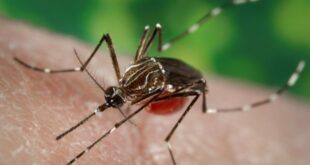Study details group of 49 orcas spotted hunting sperm whales, dolphins and a leatherback turtle.

Scientists at the University of British Columbia say they have identified a potentially new population of killers whales that hunt the planet’s largest predators in the open ocean.
A group of 49 orcas has been seen hunting sperm whales, elephant seals, dolphins and even a leatherback turtle as far as 300 kilometres off the coast of California and Oregon, according to a peer-reviewed study published in the journal Aquatic Mammals last week.
And it seems the killer whales haven’t been studied before, according to co-author Andrew Trites, a professor at UBC’s Institute for the Oceans and Fisheries.
“It appears that these are a unique group of killer whales,” he told CBC’s On The Coast on Monday. “We think they’re probably related to the transient type, but for now, we’re calling them oceanics and just making people aware that there’s something else out there that we don’t fully understand.”
.png?crop=1.777xh:h;*,*&downsize=510px:*510w)
UBC researchers investigate new population of killer whales
A group of 49 orcas has been observed hunting sperm whales in the open ocean off the coast of California and Oregon. Researchers from the University of B.C. say this population is new to them and could belong to a subpopulation of transient killer whales or could be a unique population.
Researchers say the orcas were observed in nine encounters from 1997 to 2021, and lead author Josh McInnes stressed the group of orcas are not a new species but likely a subpopulation.
“They’re still killer whales … that have just spent more time in the open ocean that we just haven’t seen before,” he said in an interview.
In a 1997 encounter around 130 kilometres from the coast of California, around 35 killer whales hunted a herd of nine sperm whales and made off with one after chasing them over three kilometres.
“Small concentrated groups of four to five killer whales randomly targeted and attacked individual sperm whales in the rosette,” the study said.
A rosette is a term describing how the sperm whales gathered in a circle with their heads together and their tails pointing outward.
“Fresh blood and an oil slick of animal fat could be seen at the surface following each attack,” the study continued.
More research needed
The whales’ varied diet was what stood out most to Erin Gless, executive director of the Washington-based Pacific Whale Watch Association, who was not involved in the study.
“I have read about killer whales attacking sea turtles in the tropics, but never in places like California and Oregon that are much colder waters,” she said.
“I think that it’s just indicative of the fact that they live in these really open water conditions and so they don’t have the beaches full of seals, for example, like we have here in B.C., so they need to pretty much eat whatever they come across.”

The killer whale populations in B.C. include southern resident killer whales, who mostly eat salmon and other fish, and Bigg’s (transient) killer whales, who hunt larger mammals like sea lions, sea otters and sometimes whales.
Researchers were able to identify the orcas as possibly a new group partially because of cookie-cutter like shark bite scars seen on the animals, and through distinctive patches on the orcas’ fins and saddles. The species of parasitic sharks involved in the bites live in the deep ocean near the tropics, according to researchers.
Trites says they hope to document more sightings, DNA and data from the new population in order to investigate exactly how different these orcas are from other documented populations.
“We’re up to 49, but like with all of these newly discovered populations, there’s more pictures coming,” he said. “And so since we put this together, we have heard and have become aware of a few more individuals.
“We don’t know where it’s going to top off at, but it could well be 100 or perhaps even 200.”
McInnes, Trites and Gless agreed the study is an exciting step in learning more about killer whales and how much is still unknown about them in B.C. and beyond.
“With killer whales, it’s a species that fascinates the entire world,” said Trites. “But even as we spend time getting to better know the ones that we think we know already, we’re still making new discoveries.
“And I think it just points to how much more we still have to learn about killer whales and the oceans and why it’s so important that we protect them.”
ABOUT THE AUTHOR
Moira Wyton is a Vancouver-based journalist for CBC News. She previously reported on politics for the Edmonton Journal and covered health at The Tyee. Her reporting has been nominated for national and provincial awards from the Canadian Association of Journalists, Jack Webster Foundation and the Digital Publishing Awards. You can reach her at moira.wyton@cbc.ca.
With files from On The Coast, Shaurya Kshatri and The Canadian Press’s Nono Shen
*****
Credit belongs to : www.cbc.ca
 Atin Ito First Filipino Community Newspaper in Ontario
Atin Ito First Filipino Community Newspaper in Ontario







